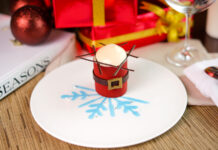 Around the world, champagne is considered the choice drink of lovers, the favorite deal-sealing beverage for businessmen, a sign of class and elegance, a product of luxury indulgence that spells good taste and success. But, not all bottles of champagne are created equal.
Around the world, champagne is considered the choice drink of lovers, the favorite deal-sealing beverage for businessmen, a sign of class and elegance, a product of luxury indulgence that spells good taste and success. But, not all bottles of champagne are created equal.
In fact, the variety of grape used, the history of the producer, the blend, terroir, and variations on bottling methods are all considered when producing the wine.
For a connoisseur, there are several things to consider before buying and serving the perfect tipple. Here are a few tips to guide you in your search for perfection.
Choosing the Right Type
Consider the Information Provided on the Label. It is a legal requirement that labels on champagne bottles should provide particular information. For connoisseurs, this makes choosing a bottle easier. Label information should include:
Certification and producer information
Vineyards are required to be registered with the Comite Champagne certification board if they wish to sell their wine as champagne. The label needs to include a registration code unique to the producer, their official name, the batch number of the wine, and the commune of registration within France’s champagne region. Buyers will notice certain codes on champagne labels, such as:
- MA – Marque d’Acheteur. This is the buyer’s own-brand variety.
- NM – Negociant Manipulant. This signifies either a company or an individual that may or may not have their own vines, that purchases grapes to make champagne on their premises.
- CM – Cooperative de Manipulation. A wine co-op that produces champagne on co-op premises from its member’s grapes.
- RM – Recoltant Manipulant. A grower who produces and markets his/her own champagne label from grapes that are sourced exclusively from the grower’s vineyard.
- ND – Negociant Distributeur. A distributor who purchases finished bottles of champagne and labels them on his/her premises.
- RC – Recoltant Cooperateur. A co-op grower who sells a either partly or completely co-op produced champagne under the grower’s own label.
The sweetness designation of your champagne
Typically, fermented champagne does not contain a great deal of sugar. However, some extra-sweet wine is usually added during bottling to balance the taste and generate effervescence. Labels are required to include a sweetness designation according to sugar content thus:
- Sec – 17 – 32 g/l
- Extra dry – 12 – 17 g/l
- Brut – less than 12 g/l
- Extra brut – 0 – 6 g/l
- Sweet– over 50 g/l
- Demi-sec – 32 – 50 g/l
Labels with the words Dosage Zero, Brut Nature or Pas Dose, signify wines that had not had sweetness added during the bottling process.
Grape type and other information
Many champagne bottle labels include additional information that make the choosing process easier. Such information may include:
- Blanc de Noirs –a champagne produced exclusively from black-skinned grapes.
- Blanc de blancs – a champagne produced exclusively from lighter-skinned grapes, such as a Chardonnay.
- Harvest year – a vintage champagne made from the fruit produced in the depicted year that does not contain reserve wines. Usually, the year of harvest is also depicted on the cork.
- Premier Cru or Grand Cru – a champagne produced from vineyards that hold such status.
What Type of Bottle Will You Choose?
Champagne bottles need to be able to handle high pressure and repeated handling. However, there is room for slight style variations. Typically, champagnes are bottles in amber or dark green glass. Rose champagne, though, is bottled in clear glass. It is a legal requirement that champagne is sold in the bottle in which it underwent its second fermentation.
Tips for Serving It the Right Way
There is an art to serving champagne correctly, and several elements should be taken into consideration.
How to Open the Bottle
Opening a bottle of champagne with a loud pop can result in a flat blend and a waste of delicious champagne. The correct way to open the bottle is to grasp the cork firmly and then gently turn the bottle to slide the cork out.
The Temperature of the Champagne
Traditionally, champagne should be served chilled, having been in a refrigerator for 2 – 3 hours beforehand. For more style, it can be placed in an ice bucket for about 20 minutes before serving.
The Type of Glass
It is a misconception that champagne should be served in a shallow, round glass. To truly appreciate champagne, it should be served in a tulip-shaped flute which is both wide enough and tall enough to allow the bubbles to develop while the tapered top concentrates the blend’s bouquet.
Once the bottle has been opened, it should be consumed within an hour or two before the champagne goes flat.
Pouring the champagne
When pouring champagne, aim to avoid too many bubbles. Only fill the glass two thirds of the way so that there is space for the bouquet to develop. Then, allow the champagne to settle for a few moments before serving.
Champagne enjoys an esteemed reputation as a celebratory drink. But, selecting a poor-quality blend and serving it incorrectly can be a waste of money. If champagne is to be served, either at an event, or as a luxury treat, it should be chosen carefully, served respectfully, and thoroughly enjoyed.














